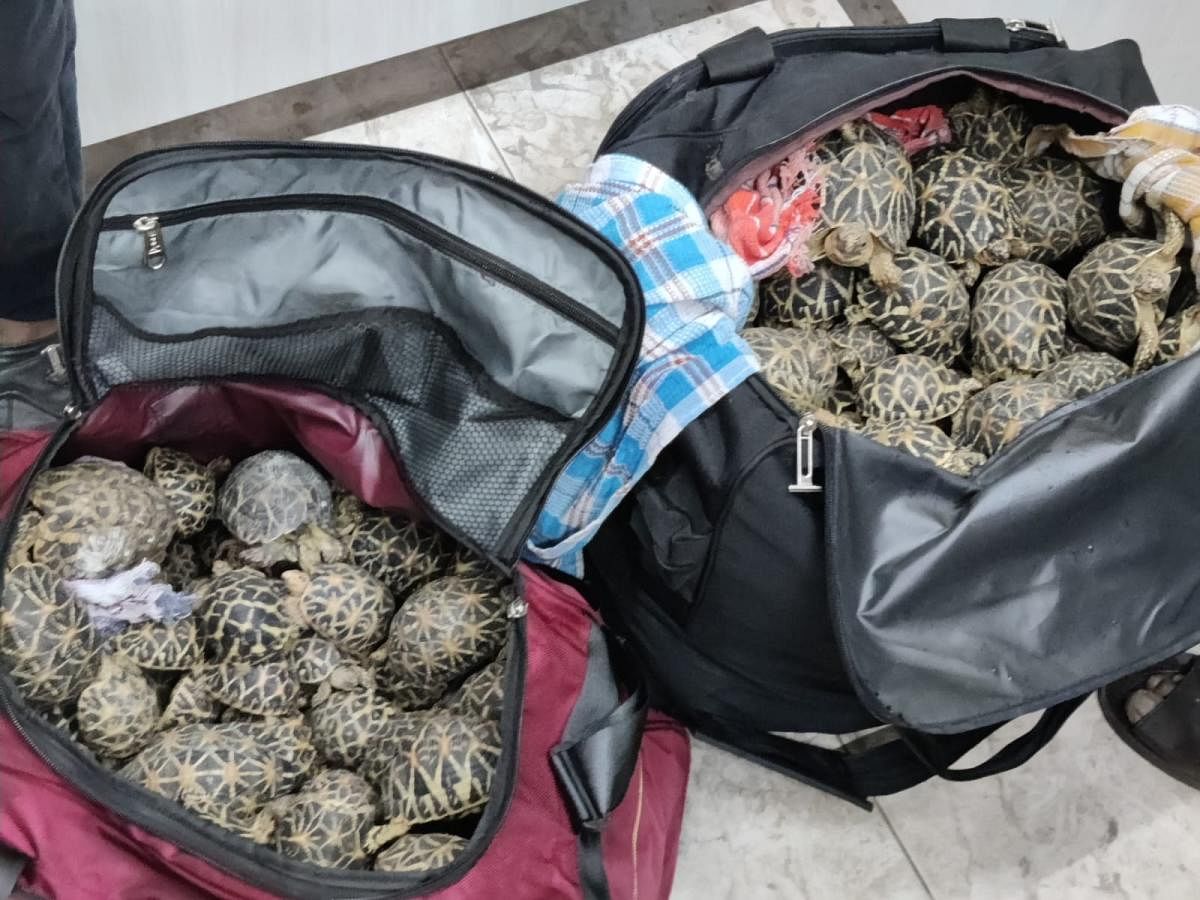
Star tortoises, found only in India, are regularly smuggled out to meet the high demand in the international market.
“In Thailand, a star tortoise is sold for Rs 5,000 and in the US, a Indian tortoise is sold for about Rs 1 lakh,” says Sanjeev Pednekar, founder of Prani, a pet sanctuary in Somanahalli Village, Kanakapura Road.
Sharath Babu, wildlife conservationist, says the tortoises are kept as pets, especially by those who believe in Feng shui, a Chinese tradition that claims to harmonise energy forces with individual needs.
“Even if 50 per cent of the captured tortoises survive, the smugglers rake in good profits. The largest racket that was ever busted was the one run by Manivannan Murugesan from Chennai. He was arrested by the Wildlife Crime Control Bureau and Interpol in 2018. He was denied bail in the Supreme Court and is still languishing in jail,” he told Metrolife.
Where it is found
In Karnataka, the star tortoise trade is prominent in and around Kolar and Chikkaballapur where some tribes are involved in capturing, smuggling and trading.
Some tribal colonies have developed a network. Law enforcement agencies find it difficult to arrest offenders because they show extreme reactions—women undress and throw themselves, and sometimes their children, in front of moving vehicles, says Sharath Babu.
“About 1,000 to 2,000 star tortoises are confiscated in each raid. The core operations are in Chikkaballapur and the maximum arrests are from this region. The trade also flourishes in Balegowdanahalli and in a tribal colony,” he says.
Many in the trade look poor but hold passports and work with accomplices in Hosur and other parts of Tamil Nadu. They sell the tortoises in Bangkok, Malaysia and Singapore, he says.
The trade first began in Chennai. Whenever an illegal trader was caught, a small fine was levied and he was let off. Slowly, smuggling tortoises has grown into a lucrative trade, he says.
The Kempegowda airport is doing its bit to curb the racket. The maximum arrests are mules who only carry the bags and don’t know anything about the trade. They say a mule gets paid Rs 5,000 per trip.
How they are bred
Pednekar feels illegal trading will come down if India starts a selective breeding programme and monitors it.
“The star tortoise is available only in India and it is not an endangered species, but it has become one because it’s smuggled in excessive number during the hatching season. There are more star tortoise in captivity than in the wild. This is why there’s a huge reduction in the population in the natural habitat. If we don’t do something about this law, then the whole species will be wiped out and we will have no record of it in the wild,” cautions Pednekar.
Dubai and the US offer a legal permit to buy and sell certain animals. We should have a similar provision here, he suggests.
Haul of 401 tortoises
The Bengaluru police recently raided a travel agency in Kalasipalyam
and seized 401 Indian star tortoises. The consignment was bound for Chennai en route to West Asia, the Middle East and the US. The rescued tortoises are being rehabilitated at the Bannerghatta National Park. M L Chetan Kumar, inspector, Kalasipalyam police station, says his team cracked the case thanks to a tip-off. “A man called Muthu Hamad Meera was trying to transport them to Chennai. He says he was given the tortoises by Kumar, whom we are trying to trace,” says Chetan.
How they are collected
Agents living in the villages tell farmers to capture these tortoises in exchange for money.
Conservationist Sanjeev Pednekar says the tortoises largely survive on land. “There’s a misconception that star tortoises survive in water. On the contrary, they drown and die as soon as they are put into water,” he says. The smugglers collect star tortoises over many months. “A star tortoise lays only one to four clutches a year and the incubation is between 100 and 220 days. Only a few survive and when they do, they are indestructible,” he says. He also says that the biggest challenge for conservationists is to make sure that rescued tortoises are rehabilitated and released into habitats that are assumed to the right habitat. “We just leave them in a safe place hoping they survive. Usually biological reserves or national parks are considered safe release zone,” he says.